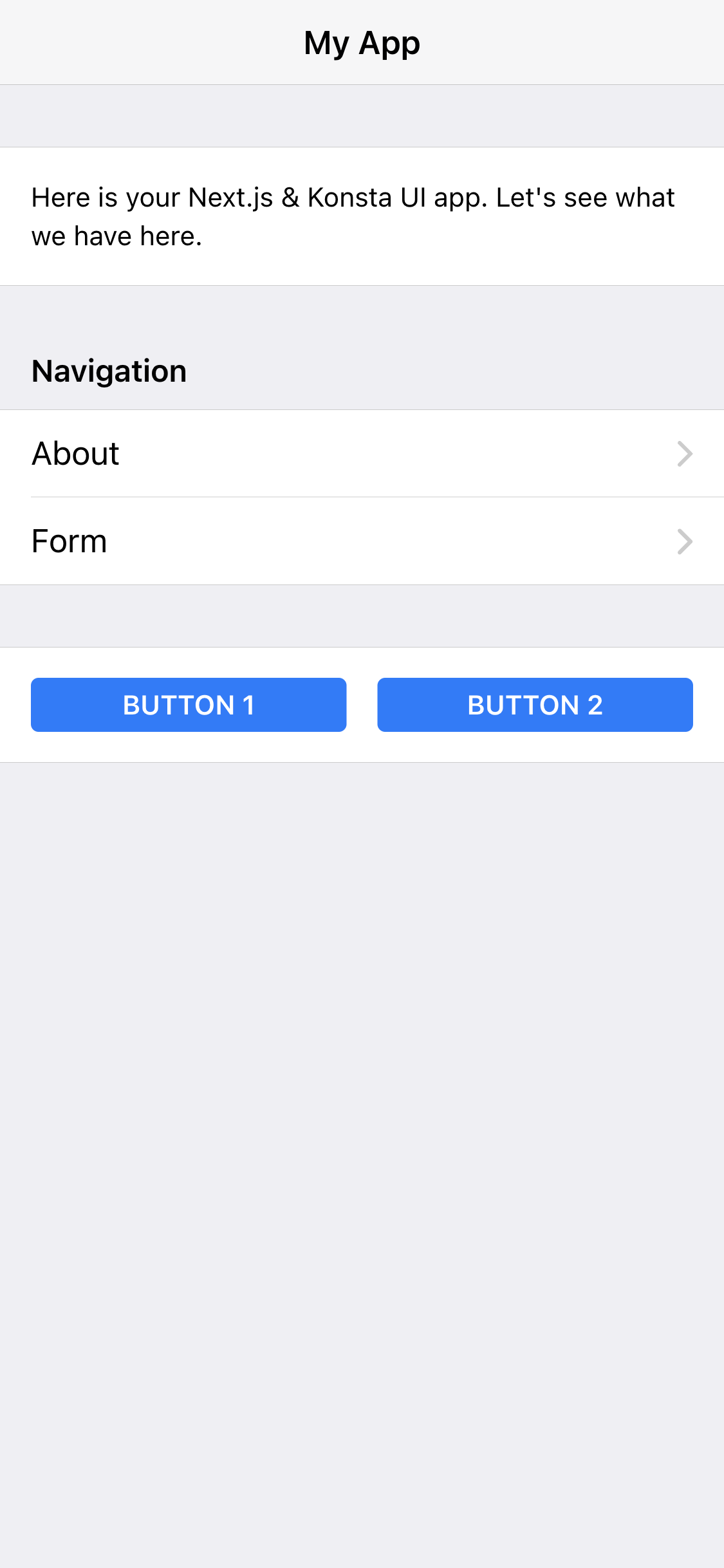Components
- KonstaProvider
- App
- Action Sheet
- Badge
- Block
- Breadcrumbs
- Button
- Card
- Checkbox
- Chip
- Contacts List
- Data Table
- Dialog
- Floating Action Button
- Icon
- Link
- List
- List Button
- List Input
- List Item
- Menu List
- Messagebar
- Messages
- Navbar
- Notification
- Page
- Panel / Side Panels
- Popover
- Popup
- Preloader
- Progressbar
- Radio
- Range Slider
- Searchbar
- Segmented Control
- Sheet Modal
- Stepper
- Tabbar
- Toast
- Toggle
- Toolbar
- Toolbar Pane
Konsta UI & Nuxt
Let's see how to use Konsta UI Vue components with Nuxt.
Contents
Create Nuxt Project
First, create a Nuxt project
Install Tailwind CSS
We can follow official Install Tailwind CSS with Nuxt
Install Konsta UI
Now in created Nuxt project, we need to install Konsta UI:
npm i konsta
And in your main CSS file we should import Konsta UI's theme file:
@import 'tailwindcss';
/* import Konsta UI theme */
@import 'konsta/vue/theme.css';
App Component
Now we need to setup main App component so we can set some global parameters (like theme).
We need to wrap whole app with App in the ./app.vue:
<template>
<!-- Wrap our app with App component -->
<k-app theme="ios">
<NuxtPage />
</k-app>
</template>
<script>
import { kApp } from 'konsta/vue';
import './assets/main.scss';
export default {
components: {
kApp,
},
};
</script>
Example Page
Now when everything is set up, we can use Konsta UI Vue components in our Nuxt pages.
For example, let's open pages/index.vue and change it to the following:
<template>
<k-page>
<k-navbar title="My App" />
<k-block strong>
<p>Here is your Nuxt & Konsta UI app. Let's see what we have here.</p>
</k-block>
<k-block-title>Navigation</k-block-title>
<k-list>
<k-list-item href="/about/" title="About" />
<k-list-item href="/form/" title="Form" />
</k-list>
<k-block strong class="flex space-x-4">
<k-button>Button 1</k-button>
<k-button>Button 2</k-button>
</k-block>
</k-page>
</template>
<script>
// Konsta UI components
import {
kPage,
kNavbar,
kBlock,
kButton,
kList,
kListItem,
kLink,
kBlockTitle,
} from 'konsta/vue';
export default {
components: {
kPage,
kNavbar,
kBlock,
kButton,
kList,
kListItem,
kLink,
kBlockTitle,
},
};
</script>
As a result we should see the following page:

Code licensed under MIT.





